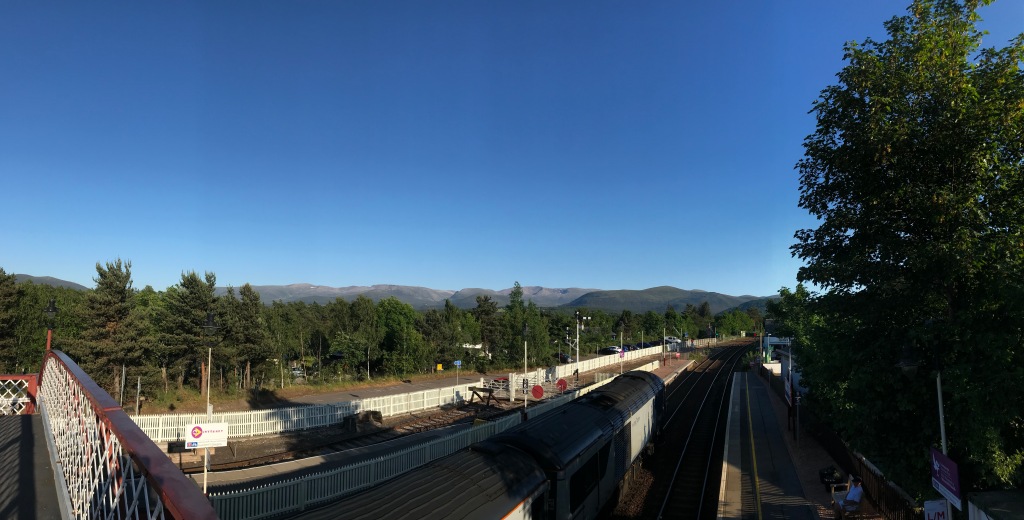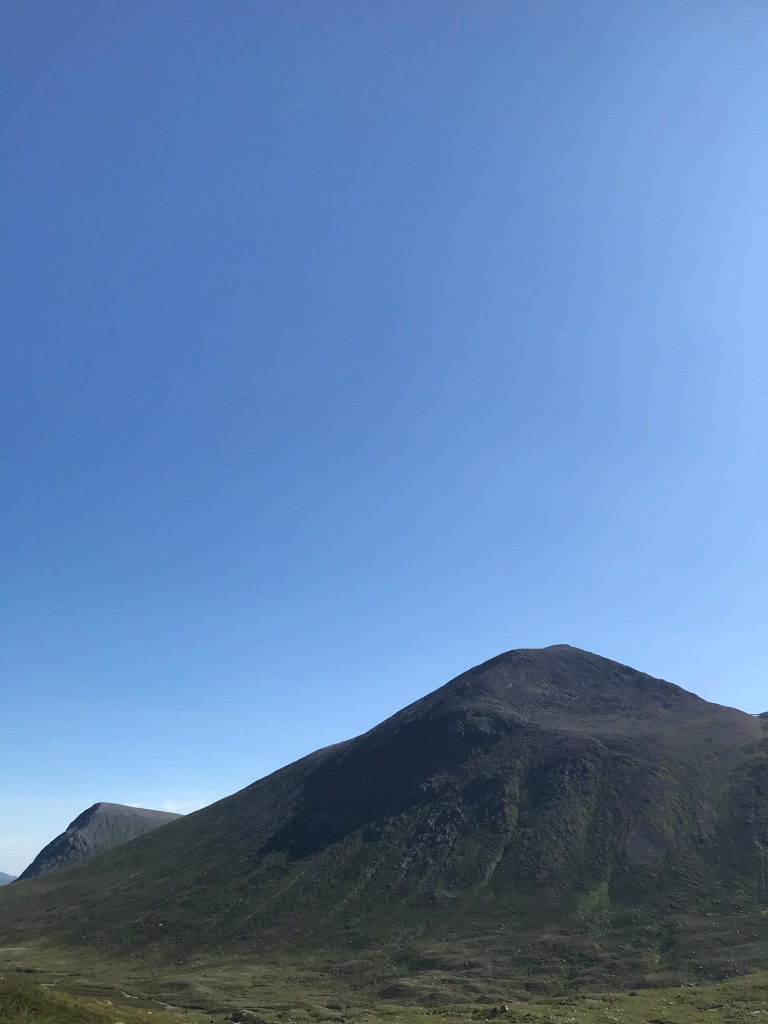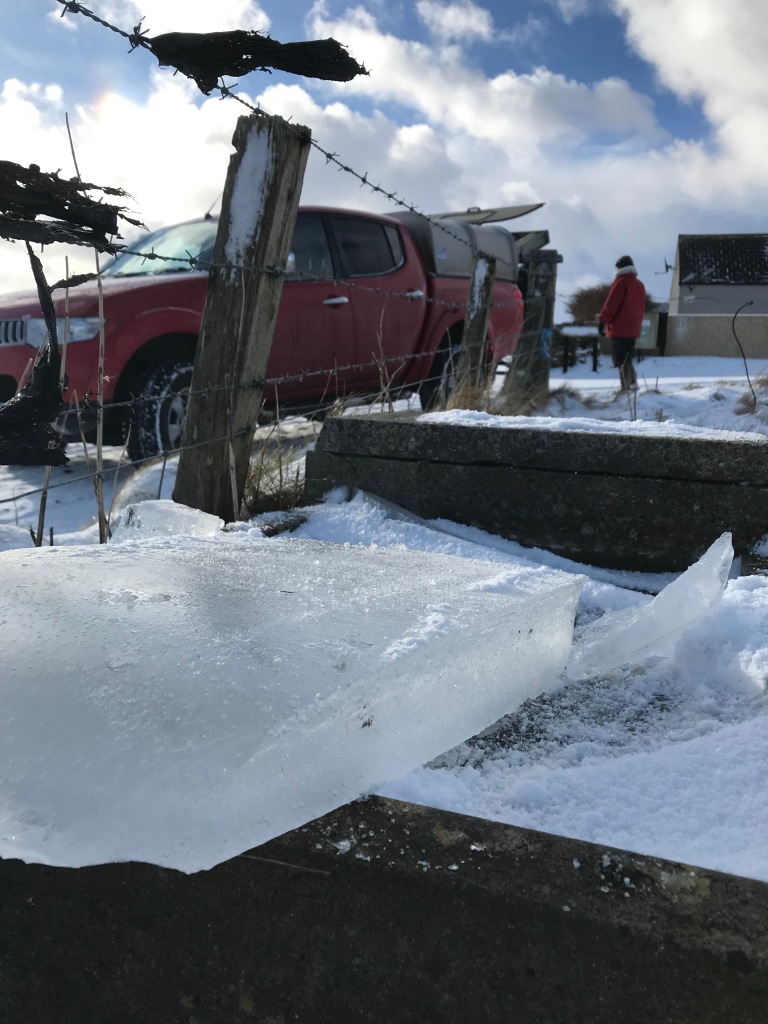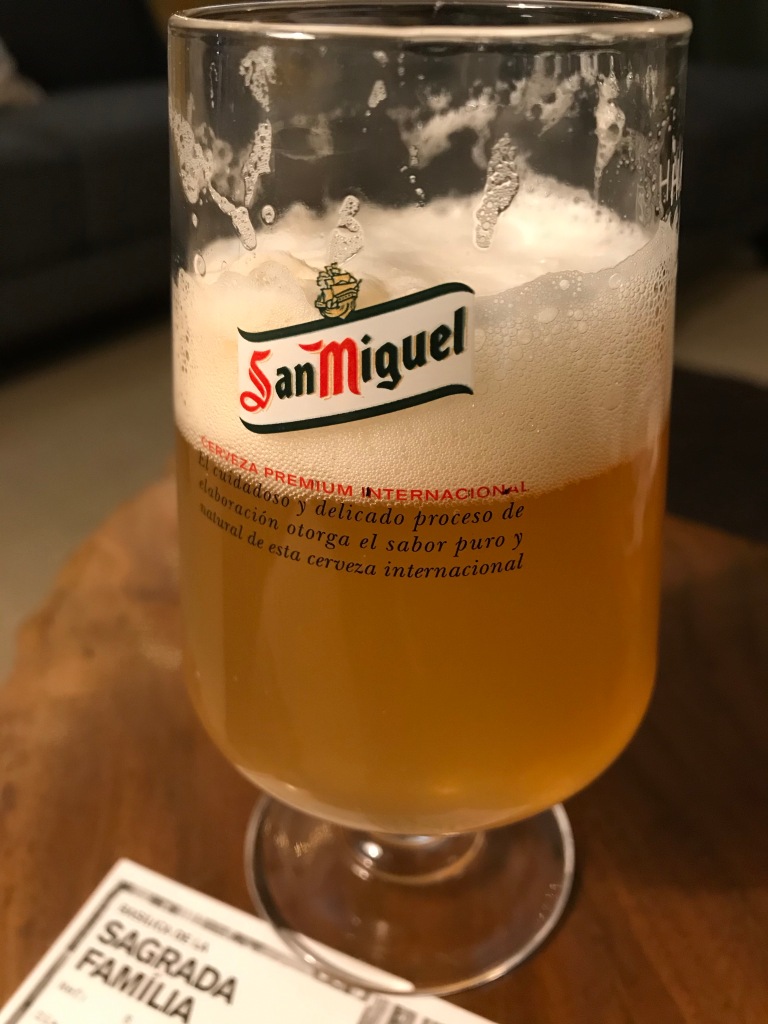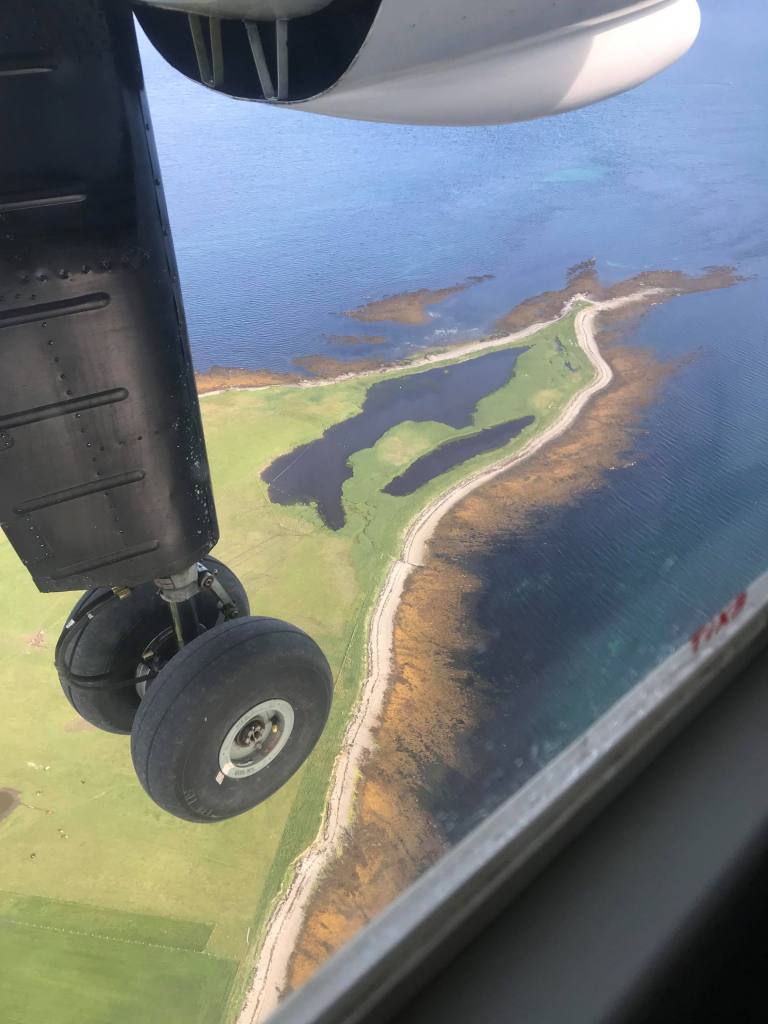I am privileged to work in a school in the village of Pierowall on the Orkney island of Westray, and my Monday morning commute is pretty spectacular. At Kirkwall airport, I board the little eight-seater Britten-Norman ‘Islander’ aircraft, and within a few moments we are in the air. Climbing westward from Grimsetter, the Islander veers north over the spire of St Magnus Cathedral. Soon we are moving towards and over the expansive, fertile North Isles, peering down at the multitude of saga sites and viking points of interest among the grass, heather and rocks below. Orkneyinga Saga, the great book of Viking Orkney, often comes into my thoughts while I’m on this commute.
Within the first five minutes of the flight we are passing the farm of Langskaill, on the heathery isle of Gairsay, the homestead of Eric Linklater’s ‘ultimate viking’, Svein Asleifarson. A little further north appears the stone keep built by Norse chieftain Kolbein Hruga on the island of Wyre. Then comes the long, narrow, marshy isle of Egilsay, scene of the failed twelfth-century peace summit between cousins Magnus Erlendsson and Hakon Paulson, where Earl Magnus was murdered and martyred. (We fly directly over the stone cairn marking the site of Magnus’ execution.) Then we are out over the breathtaking expanse of the Westray Firth and fast approaching the magnificent modern steading at Tuquoy, where Haflidi Thorkelson built his Christian chapel in the twelfth century. The aircraft descends over Westray and the perfect aquamarine horseshoe of Pierowall Bay, scene of Earl Rognvald Kolson’s famous landing ahead of his successful bid for the earldom, and the oldest continuously inhabited settlement in Orkney. We land with a comfortable bump on the airstrip at Skaill, in the north of Westray.
It is partly because of this geographical and topographical rootedness that reading Orkneyinga Saga remains such a vivid experience for Orcadians, a thousand years on from the events described in the text. In fact, such is the predominance of the Norse period in Orcadian historiography that the Picts who preceded the Norse, and the Scots who supplanted them, are all but forgotten. Creative writers, too, from Sir Walter Scott to Walter Traill Dennison, from Eric Linklater and J. Storer Clouston to George Mackay Brown, would mine this viking quarry for material for their poetry and fiction – to the virtual exclusion of all previous and subsequent Orcadian history.
So what of this saga text itself, if it can even be called a ‘text’? Orkneyinga Saga is a great medieval Icelandic prose work, written circa 1200. It is the bedrock underlying a great deal of the subsequent literature of the Orkney islands. Lumbering out of the Dark Ages and bristling with the myths of Orcadian origin and the exploits of pagan, viking earls, its first full translation into English appeared in 1873. As well as providing Orkney with a vivid and mostly historical account of its early medieval past, the saga has proven to be a deeply compelling and identity-shaping narrative. For many nineteenth- and twentieth-century Orcadian readers and writers, Orkneyinga Saga would come to be regarded as a ‘national’ epic. The saga is at once a historical chronicle and a literary fantasy. It is a Christian book of bloodshed that celebrates saints alongside murderers. Rich in paradox, invention and embellishment, it has enjoyed enduring popularity in English translation since the late nineteenth century.
There are four English translations, two from the Victorian era, and two from the twentieth century: Joseph Anderson’s edition of 1873, translated by Jon A Hjaltalin and Gilbert Goudie, and entitled The Orkneyinga Saga; George Webbe Dasent’s 1894 translation, entitled The Orkneyingers’ Saga; A.B.Taylor’s translation of 1938, also entitled The Orkneyinga Saga; and Hermann Palsson and Paul Edwards’ translation, called Orkneyinga Saga, which was first published in 1978. The translations differ widely in style according to their period, but all bear the hallmarks of medieval Iceland in terms of terseness and pace. The names chosen for the text by each translator, or pair of translators, follow Anderson’s lead – The Orkneyinga Saga – and suggest a certain unity, as well as stressing the insular, Orkney provenance of the material of the story. This impression of unity, the concept of the text’s belonging to Orkney – the sense of Orkneyinga Saga’s existence as a great Orcadian monolith – is in actual fact very much a Victorian construct. Later historians prefer the more neutral title Jarla Saga – the saga of the earls. A total of at least twenty-one distinct textual sources are incorporated into Orkneyinga Saga: it is an anthology of Norse literature pertaining to Orkney.
The saga begins with a fabulous opening sequence giving a mythological description of the origins of the Orkney earls in northern Norway and suggesting to medieval and modern readers a sense of independent Scandinavian Orkney identity. The opening words of the first chapter, ‘There was a king called Fornjot…’ might give us the feeling that we are entering the realm of folk tale, rather than a saga of flesh and blood characters. Moving on from this introductory section, the main body of the saga begins to emerge, detailing the lives and times of the historical Norse rulers of the medieval Orkney earldom. It moves swiftly to the conquest of Orkney, Shetland, and the Western Isles by King Harald Fine-Hair of Norway, and Harald’s handing over of the earldom to Rognvald of More as compensation for the loss of his son during the campaign. The saga then goes on to relate the deeds of subsequent earls as far as the end of the twelfth century. Its themes are violence and power struggle: between rival earls – cousins, brothers, uncles and nephews; between the Orkney Earls and Scots chieftains or kings; and between the earls and their overlords, the Kings of Norway.
The saga is epic in scale and depicts a vast and sometimes bewildering array of personalities. Outstandingly colourful episodes include the cleansing of Orkney of ‘pirates’ by ugly, one-eyed, keen-sighted Turf Einar – the shadowy earl who is aligned with Odin. Or the unlikely death of Sigurd the Stout, who decapitates an enemy and then fixes the head to his stirrup, only to die from an infection caused by the corpse’s tooth cutting into his leg. Or the scene where Thorfinn the Mighty leaps from the window of a burning house, his wife in his arms, before rowing across the wide Pentland Firth to safety. The core of the narrative is devoted to the lives of Baldur-like St. Magnus Erlendsson, who refused to fight in the arrow storm of a sea battle in the Menai Strait, and his nephew the debonair poet-warrior Rognvald Kolson, who built St. Magnus Cathedral in his uncle’s memory. Svein Asleifarson, the great picaresque viking of Gairsay, is not an earl, yet he turns up continually in this story, supporting earls, kidnapping earls, sleeping under the stars on the deck of his longship, living and dying by his sword.
The translation and publication of this ‘book’ in 1873 would excite the wildest atavistic dreams of those seeking to forge national or quasi-national identities in the north (British, Scottish, and/or Orcadian) through a century’s worth of subsequent literature and historiography. Where a text like Ossian had been invented to satisfy the longings of a particular Jacobite group, Orkneyinga Saga simply had to be translated – and assembled, anthologised – to supply a unique and often historical record of a ‘primitive’, ‘heroic’ society for Victorian and Edwardian readers. Antiquarians in Orkney would, of course, have more success in corroborating the prose of the saga than those who sought to verify the authenticity of the Poems of Ossian: St Magnus Cathedral was the defining architectural symbol of Orkney; the carved runes of Maeshowe confirmed the account in the saga that vikings were there; the broken bones of the saints were discovered in the pillar of St. Magnus where they had been hidden at the Reformation; the Skaill silver hoard, too, would corroborate the tales of buried treasure and reveal the former presence of the vikings written about in this book. There could be little argument with the provenance or the authenticity of Orkneyinga Saga.
So what of ‘national’ ownership of the text? Is this, then, the Scottish Saga? We might agree that there is something absurd in trying to assign a ‘nationality’ to this nebulous collection of pre-national, medieval texts. Despite its natural dwelling place among the literature of medieval Iceland, attempts have been made to draw Orkneyinga Saga towards the Scottish canon through the identification of Celtic lexis and motif in the prose. And specialists in the early poetry of what is now Scotland have anthologised the strophes of Turf-Einar, Arnor Jarlaskald, and Earl Rognvald Kolson for a collection of the earliest poetry of Scotland. But even a tentative designation of Orkneyinga Saga as ur-Scottish might seem ill-fitting and anachronistically nationalistic. Palsson and Edwards concur that the author’s identity remains unknown, although he was very likely a cleric associated with Oddi in the south of Iceland. Confirming, or suggesting, continued identification of the text in the Orkney imagination, their 1978 introduction invests in the saga a thrilling, emotive authority: ‘for the people of Orkney, it has a special significance, having become, since its first appearance in an English translation, what might be called their secular scripture, inculcating in them a keener sense of their remote forebears and sharpening their awareness of a special identity.’ This is a heady and emotional description indeed, suggesting that Orcadians might identify, over a stretch of eight or ten centuries, with the primordially distant characters/personalities of ‘their’ saga.
Onomastics and geography have added their own enhancing dimensions to the saga for these readers in Orkney. It is easier to argue that Orkneyinga Saga belongs to an archipelago than it is to say it belongs to a nation. If the Orkney landscape is everywhere littered with the stone and metal evidence of past peoples – the vikings among them – then the map of Orkney, and the Orkney imagination, are dominated by the place name legacy of the Norse. The topography of Orkneyinga Saga is instantly recognisable to anyone familiar with the modern names of the Orkney landscape. For Orkney readers, the saga enlivens this landscape in the imagination, and gives the impression of political and/or violent action taking place in small and seemingly peripheral places such as Birsay, Damsay, Deerness, Eglisay, Eynhallow, North Ronaldsay, Papa Stronsay, Rousay, South Walls, Stroma or Westray, some of them now uninhabited, places some might think of as being far from the centre of things. Details of stormy weather, accurate tidal knowledge, and evocative snatches of domestic agricultural detail combine with place names and the unchanged geography of the archipelago to enhance, for Orkney folk, the sense of home setting, of this being an ‘Orkney Book’.
So accustomed have we become to the categorisations of genre that there is a difficulty for us in coming to terms with a text which bridges historiography and literature in the way that Orkneyinga Saga does. We can only really appreciate this saga when we accept that it is a paradoxical combination of literature, history, anthology, and embellished historiography. While historians have occasionally expressed impatience with the saga (Michael Lynch describes it as ‘at once verbose and sparing with the facts’) its existence has nevertheless supplied us with a great deal of our knowledge of the Viking Age in Scotland. While the case for reading the saga as history was once encouraged, corroborated by the wealth of archaeological evidence, historians working in the late twentieth century have broadened our understanding of the material, embracing its literariness. The ideological project underlying the collection of the material of the saga is taken up again when writers such as Eric Linklater, J. Storer Clouston or George Mackay Brown promote it as the essential narrative of Orcadian identity.
Perhaps the enduring appeal of Orkneyinga Saga lies in its very amorphousness, the fact that it lies somewhere between history and fiction. It has doubill pleasance, to paraphrase Barbour’s famous comment at the outset of The Bruce, both in its carpying and its suthfastnes. Orkneyinga Saga cannot be completely dismissed as a fiction, nor can it be entirely trusted as a history. It is therefore a perpetually fascinating text, and – whether or not we buy into the primordial, atavistic and quasi-national appeal that many have found in it – it would be difficult not to agree that this saga remains one of the greatest tales yet told in the north.
(This essay first appeared in The Bottle Imp magazine of the Association for Scottish Literary Studies)


